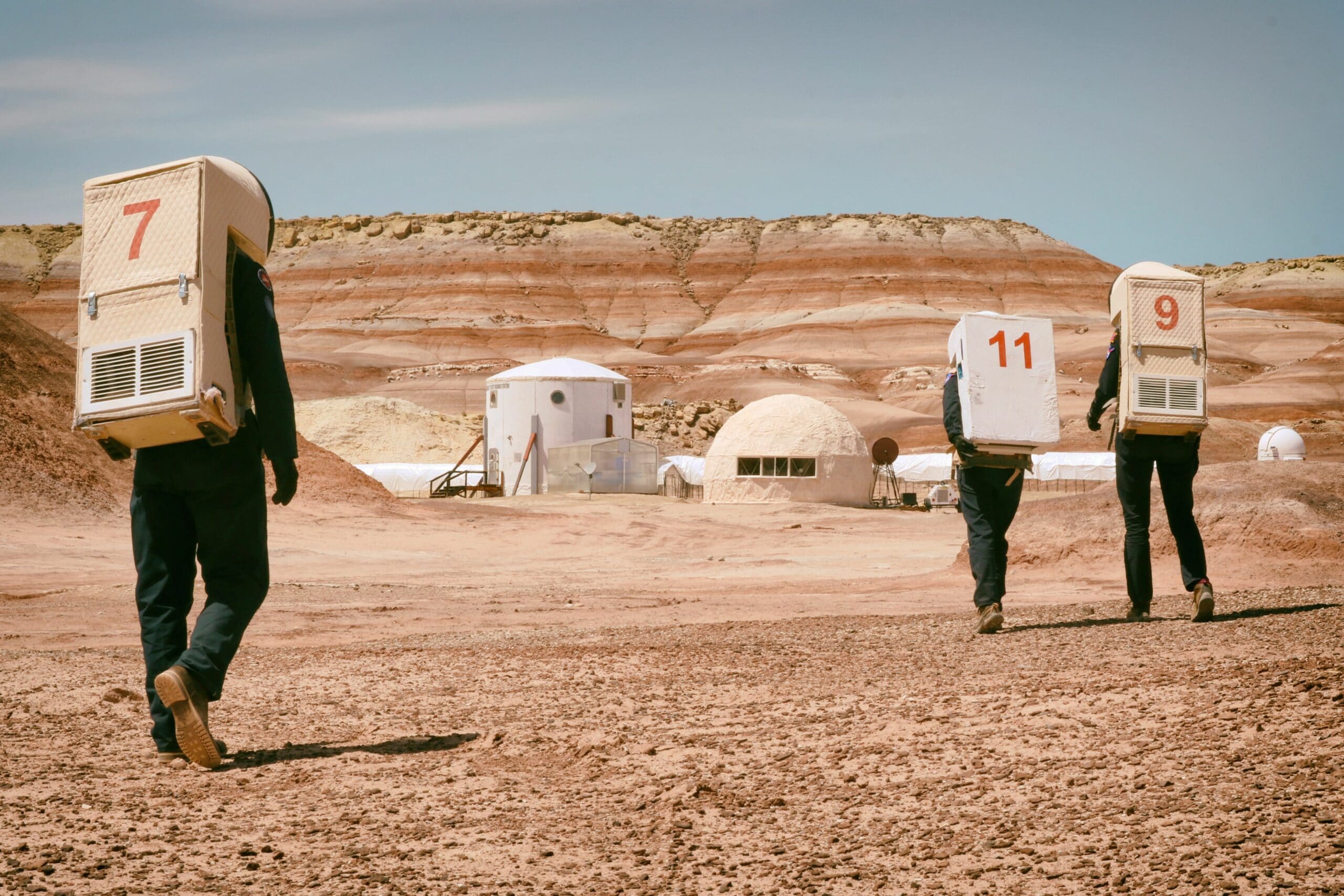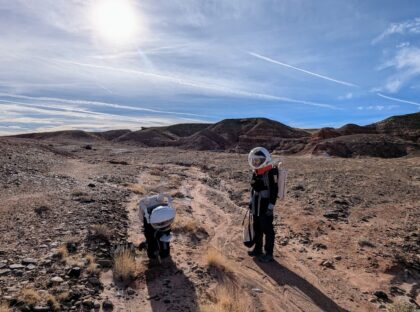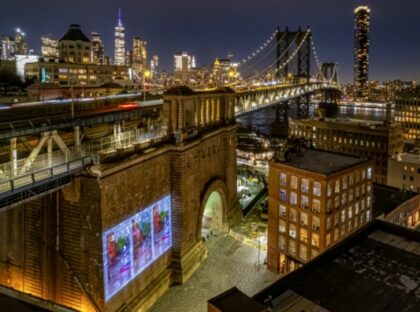
Dr. Shannon Rupert, Space.com, Nov. 3, 2021
Dr. Shannon Rupert is an ecologist and educator who has spent more than 20 years doing Mars analog research. She is the longtime director of the Mars Desert Research Station (MDRS), which is owned and operated by The Mars Society. MDRS hosts researchers who conduct their work while in a simulation, living as if they were on Mars. For more details about the MDRS program, please visit: mdrs.marssociety.org. Dr. Rupert contributed this article to Space.com’s Expert Voices: Op-Ed & Insights.
It’s early spring in the southern Utah desert. After a year-long shutdown in operations due to COVID, I’m back at the Mars Society’s Mars Desert Research Station (MDRS), where I serve as director, preparing to welcome two U.S.-based crews to the facility. After a particularly hard day of working on repairs to the water system, I’m awakened in the night by my dogs barking. I look out the small window of my bedroom, which is separated from the station by two hills, and I can see what appears to be bright light shining on one of the buildings. While I struggle to make sense of it, my dogs quiet down, so I drift back to sleep, thinking I hadn’t noticed the moon was full.
Months later, our director of public relations receives an email. Attached is a photo of MDRS, all lit up, with the night sky emblazoned above it. In the email, the photographer gives details of his long-duration exposures and how he lit up the station during the night I just described, and spent hours photographing the night sky. He’s proud of his work, and thinks nothing of sharing how he trespassed on private land, photographed an entire field station without permission and stayed onsite while I slept a few meters away, unaware of this violation. It still unsettles me thinking about it. Imagine if someone did that in your own backyard.
Fortunately, no crew was in residence at MDRS that night. Visiting teams expect that they may see a person or two when they are out in the field, or someone viewing the station from the road off in the distance. But isolation and a suspension of disbelief regarding our crew simulations are major components to space-related analog research. Future astronauts on the Red Planet will experience a level of isolation that no human has ever gone through, and a large part of MDRS research, led by its crews, focuses on that challenge.
Making this Mars simulation as realistic as possible is key to that research. Crews can accomplish this, but not with constant outside interference. What hinders that effort are drones filming crew members from outside their windows, or people wandering around the facility, poking their heads in buildings or sitting on the hill just outside the front airlock before daybreak. All of these are things that have happened in the last few months at our station in southern Utah. With a growing interest in space and the overload of information on the internet, visitors are far more frequent at MDRS than in the past.
I enjoy welcoming the occasional guest, giving them a close up look of the station when crews are away. One of the best parts about this job is seeing someone’s eye light up at the possibility of humans actually going to the planet Mars. That all changed with COVID. Many people fled the reality of the pandemic in their daily lives by escaping to the American Southwest, where they could practice social distancing by exploring the outdoors. There was an increase in websites and social media sharing places to visit.
To read the full article, please click here.


